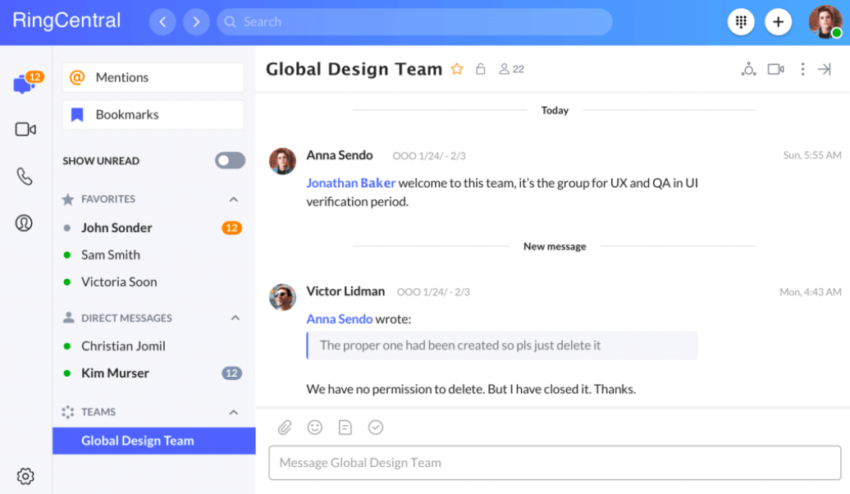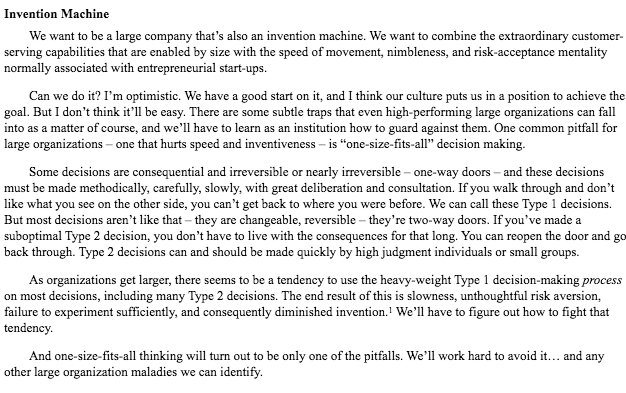You may have heard that making decisions as a team can help your organization reach the best results, since, according to lots of research out there, groups of diverse individuals tend to make better decisions.
It sounds like a nice idea, but how do you actually implement it? Anyone who has ever been in a pointless meeting will raise an eyebrow at the idea that a group can actually come to a clear decision.
Understandable. But, with the right structure to support the team, group decision-making is not only possible, but hugely impactful too.
Read on for a 3-step team decision making process—and the 3 hurdles to team decision-making that you might need to overcome first:
- What is group decision-making?
- 3 hurdles to making a group decision—and how to leap over them
- A framework for group decision-making
What is group decision-making?
Before we dive into the how, let’s look at what we mean when we talk about team decision-making.
Team decision-making is basically the process by which a group of people work together to come up with a solution to a problem. It doesn’t necessarily mean that the entire group comes to a consensus, but it does mean that multiple ideas and suggestions are considered.
You can execute team decision-making in different ways—digitally or informally, depending on the decision to be made. In fact, you’re probably already doing so all the time without really thinking about it. When you pose a question to your team in your messaging app about what they think of a new design template, you’re using team decision-making.
For big business decisions, though, it’s best to be able to see each other (on a video call, if everyone’s in different locations). This lets everyone see each other’s expressions and hear the tone in each other’s voices, which is helpful and more nuanced than just sending messages to the group.
When you’re forming a group to make a business decision together, it’s important to have enough different voices to hear different perspectives, but not so many that you’ll never reach an actual decision.
Turns out, that sweet spot is five or six people.
According to the authors of Decide & Deliver: 5 Steps to Breakthrough Performance in Your Organization, once you have seven people involved in a decision-making conversation, each additional person reduces decision effectiveness by 10%.
Ready to dive into a team decision-making model? Let’s start by addressing some of the hurdles you may have to overcome in the process.
3 hurdles to making a group decision—and how to leap over them
1. Determining the answer before the meeting
This is particularly challenging if you’re new to making decisions with a team. If you’re used to being a primary (or the only) decision maker, it can be challenging to get used to making group decisions.
Even if you’re trying to get input from others, you can sometimes stand in the way of the right decision by subconsciously framing the problem in terms of your proposed solution.
For instance, if you’re working with your team to find solutions to a marketing issue, you might form a meeting to discuss whether you should discontinue your Facebook advertising program to focus on Instagram. This might seem like an open-ended question, but it ultimately leaves your team discussing two options: keep running Facebook ads, or stop running Facebook ads.
If you instead form a meeting to discuss the root problem—poorly performing ads—you open everyone up to brand new ideas you may never have thought of (maybe you just need to optimize your Facebook audience better), which is the whole point of team decision-making in the first place.
Get to the root problem before posing the question to your decision-making group, and be open to the solutions that they might propose.
2. Excluding necessary voices
Forming the right decision-making team is crucial to making sure that you hear from key stakeholders. You don’t need to include everyone in the company.
As we mentioned above, five or six people is the sweet spot for team decision-making, but it’s also crucial that your team is made of diverse individuals. According to the Harvard Business Review, teams that are more diverse are more likely to make objective, fact-based decisions.
Get the right stakeholders in the room (or on the video call) by following the RAPID model. This stands for Recommend, Agree, Perform, Input, and Decide:
- Who is in the room to recommend solutions to the issue at hand?
- Who needs to agree in order to move forward with the decision (a department head or team member from legal)?
- Who will actually do the work to execute this decision?
- Someone should be present to offer input on the plausibility of certain ideas (someone from the product team, for instance).
- Finally, someone is designated to decide on a course of action.
Of course, one person can fill multiple roles, especially if you’re managing a small business, but this is a framework to start forming a decision-making team and doing effective teamwork.
Having the right people together is the first step, but making sure that everyone has a voice and contributes ideas to the group is key. Create a structure that gives everyone a chance to speak up—for instance, by having everyone share an idea before any are discussed.
One way to limit your discussion without getting overwhelmed by too many cooks in the kitchen is to use a team messaging app to create a group for the decision-makers you want and having the discussion there:

Ask leaders in the room to model active listening and comment on the ideas brought by junior team members to be sure they are considered.
Be intentional—include a variety of voices in your discussion. Otherwise, what’s the point of deciding as a team?
3. Discussing every single decision
While it’s true that working in teams is a great way to make effective decisions, don’t fall into the trap of thinking you need to bring every little thing to a counsel for debate.
While the team decision-making model is great for effectively making big decisions, if you bring every little change to a group, you’re never going to be able to get past the decision-making to actually take action.
There are some decisions that can be made without the input of the entire team. For a smaller, easily reversible choice, like testing a new email subscription call-to-action, you can reasonably make a decision without the input of a group.
This is the thinking that Amazon founder Jeff Bezos explained in a shareholder letter in 1997. He referred to irreversible decisions as “Type 1” and reversible decisions as “Type 2” decisions. “Type 2 decisions,” he explained, “can and should be made quickly by high judgement individuals or small groups.”

Try using this distinction in your organization, or just use your own measurement of what constitutes a big decision that requires team input vs a smaller decision you could make on your own.
The key? Don’t fear failure if you make a bad decision. Just be prepared to learn from it.
A framework for group decision-making
Start on the same page
In order to run an efficient meeting that results in an actual decision, you need to be sure that everyone has an understanding of what they’re working on.
Make sure that everyone is on the same page before the decision-making meeting by providing:
- Clarity about the problem you are attempting to address
- Background information about the problem
- An outline of how the decision-making meeting will run
This information might seem obvious to you, but if you don’t provide the right background information, you could get sucked into providing this information during the meeting and wasting valuable decision-making time.
Providing background and letting employees know that they should bring ideas for solutions is also a good way to avoid groupthink—by sharing information in advance, your team will have the time and space to develop ideas on their own, meaning you’ll get more innovative solutions brought to the table when the time comes.
Again, be sure to leave the question open-ended as you’re framing the problem—instead of asking “should we change the internal organization of the support team?,” present the communication difficulties within the support team and see what ideas come to the table.
Your company’s communication tools are key to facilitating group decisions. We’re all used to having everyone in the same room for big decisions, but with remote work and distributed teams becoming more popular, it’s a good idea to look into communication technology that can make everyone’s voice heard—even if they can’t all be present.
For example, you can use an app like RingCentral to let everyone communicate and deliberate decisions on video calls and instant messaging. Here’s a quick look at how the app works:
You can even easily upload any relevant documents using Google Drive, Dropbox, or Evernote, do screen sharing, and edit files together.
Communicate the final decision and implementation clearly
As we mentioned earlier in the RAPID model, it’s important to be clear from the beginning who the final decision maker is—otherwise, you may have an endless meeting on your hands. Trying to get to the point of consensus will only slow you down, (especially if this isn’t a massive, irreversible decision).
The decision maker should be a leader who is willing to listen to and consider the different opinions of the group, but ultimately make an evidence-based choice for how to move forward.
Having a decision made isn’t the end of your meeting, though. You need to ensure that everyone leaves understanding what the final decision is, who is working on implementing it, and how the decision was made.
This will help everyone, regardless of their thoughts on the final decision, feel heard and supportive of the outcome. Everyone will also be clear on next steps so that a real result actually comes out of this decision.
After you’ve come to a decision, immediately create follow-up tasks for each member of the team. By creating tasks right away, everyone knows what the process will look like and who will be taking which actions. This also means that you’ll be able to see if the work is evenly distributed.
For big, permanent company decisions—like a major rebranding—you’ll also need to communicate the final decision and reasons behind it to the rest of the organization.
Sharing some of the decision making process can help get buy-in across the company. If possible, share what issue you are solving, how this choice was made, and what alternatives were considered.
You can still make it clear that the decision is final, but by offering a peek behind the scenes, you’ll help the whole team understand what’s going on, feel included, and be supportive of the final choice.
Can group decision-making work for you?
The team decision-making process requires you to be more intentional than just letting employees know about a decision that was made.
It’s more work, but it’s also been proven to result in better decisions, and ultimately, the quality of these decisions can directly impact your business results.
By avoiding the pitfalls of both working in silos and involving too many people, you can help your team come to decisions efficiently and effectively as they work together to find new solutions.
Originally published Feb 03, 2020, updated Jan 08, 2021





